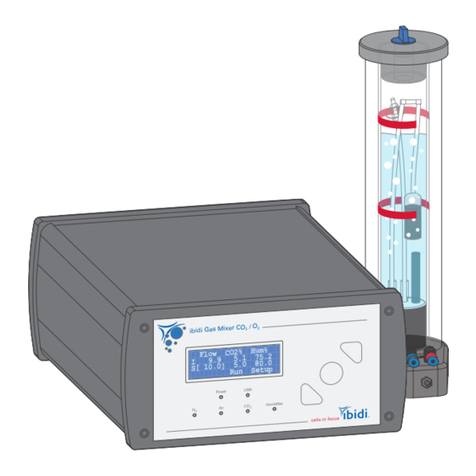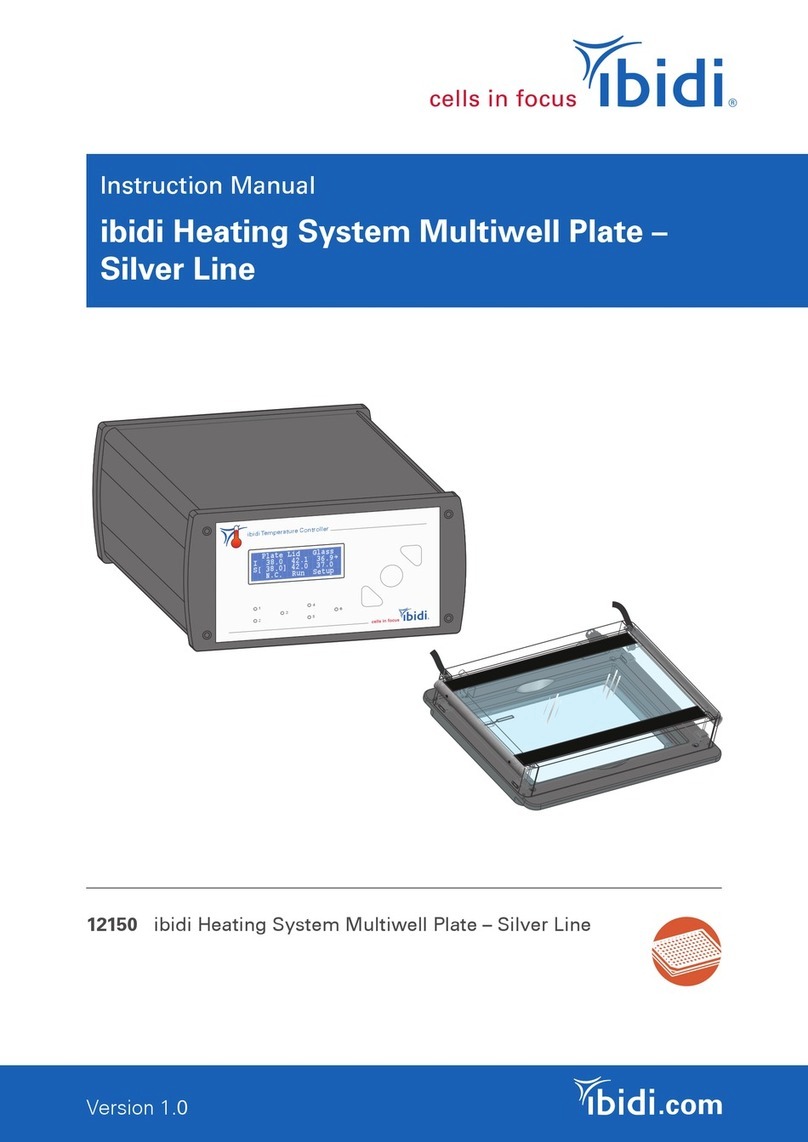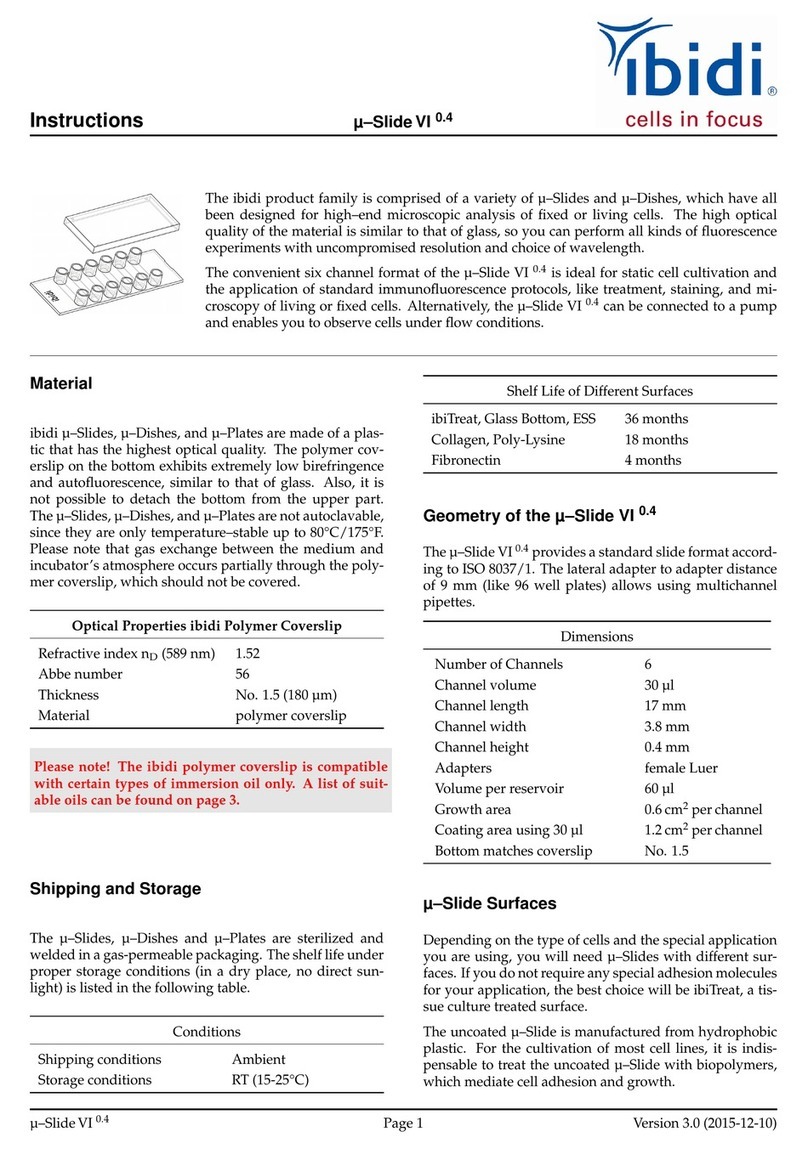
Gas Incubation System
1.5 Disclaimer
• ibidi shall not be held liable, either directly or indirectly, for any damage incurred as a result of
product use.
• The contents of this manual are subject to change without notice for product improvement.
• This manual is considered complete and accurate at publication.
• This manual does not guarantee the validity of any patent rights or other rights.
• If an ibidi software program doesn’t function properly, this may be caused by a conflict from
another program operating on the computer. In this case, take corrective action by uninstalling
the conflicting product(s).
• ibidi is a registered trademark of ibidi GmbH in Germany and other countries.
1.6 Safety Considerations
WARNING!
• Only operate the Gas Incubation System with the supplied components.
• Only use the cables and plugs delivered with the system. The power plug of the control unit
must be inserted in an outlet with a ground (earth) contact.
• Do not replace detachable power cables by power cables with inadequate specifications. By
violating these instructions you risk electric shock and fire.
• Only use extension cables that have a protective ground wire.
• Do not operate the Gas Incubation System under conditions that pose a risk of explosion, implo-
sion, or the release of gases. Only operate the Gas Incubation System with aqueous solutions.
• Do not operate a damaged Gas Incubation System. If the housing seems damaged or something
is rattling inside the controller, contact the ibidi service hotline for repair.
• Some accessible parts of the Gas Incubation System (Humidifying Column base, water inside
the column, and Heated Tubing Package) can reach temperatures up to 55°C/131°F (60°C/140°F
the water inside the column). Avoid touching the temperature-controlled parts of the system
when hot.
CAUTION
• Ensure that the external power supply is easily accessible. The Gas Incubation System must be
installed in a manner such that none of its components hinders access to the external power
supply.
• Immediately replace damaged cords, plugs, or cables to avoid risk of personal injury or damage
to the instrument.
Version 2.2 (May 15, 2019) 10 Instruction Manual


































